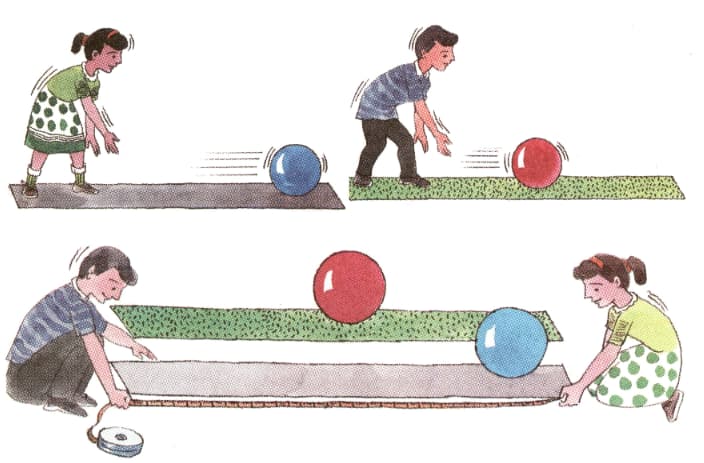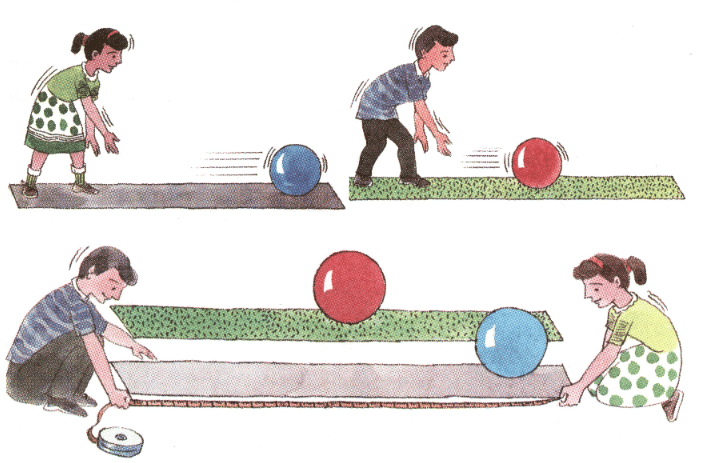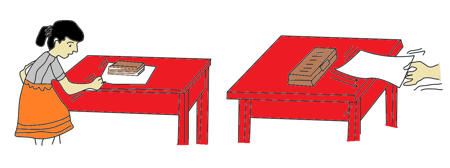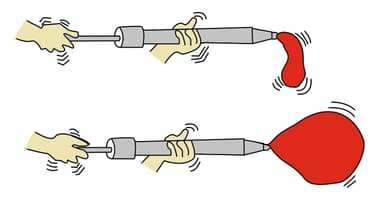Roll a ball on a flat floor. When it stops, measure how much distance it has traversed using a measuring tape.
Now roll a ball on the grass lawn. Similarly, measure the distance.

Does it face any resistance while rolling? Did it stop due to its facing some kind of resistance while rolling?


Important Questions on Time and Motion
Roll a ball on a flat floor. When it stops, measure how much distance it has traversed using a measuring tape.
Now roll a ball on the grass lawn. Similarly, measure the distance.

In which case does the ball face more resistance?
Roll a ball on a flat floor. When it stops, measure how much distance it has traversed using a measuring tape.
Now roll a ball on the grass lawn. Similarly, measure the distance.

What will happen if there is no resistance against the motion of the ball?
Take a sheet of paper as large as your exercise book's page. Lay it on the table. Place a pencil box on it. Now pull the paper suddenly and forcefully. The pencil box does not move. It remains at the same place.
Think and say why did it happen so. Can you give an explanation using this law?
When we walk
When a fish swims in water.
I) Do you have to apply the same force in both cases against the pull of the earth(i.e. the weight of the bag)?
II) In which case you have to work more?

Take spring and pull it at both ends.
What is happening?
Does the spring move from one place to another? Or does it only change its shape?
Have you done any work?
What do you see? Is the hand pump displaced as a whole?
Why is the balloon inflated?
On which body is your force applied?
Has the force applied by you done any work?


